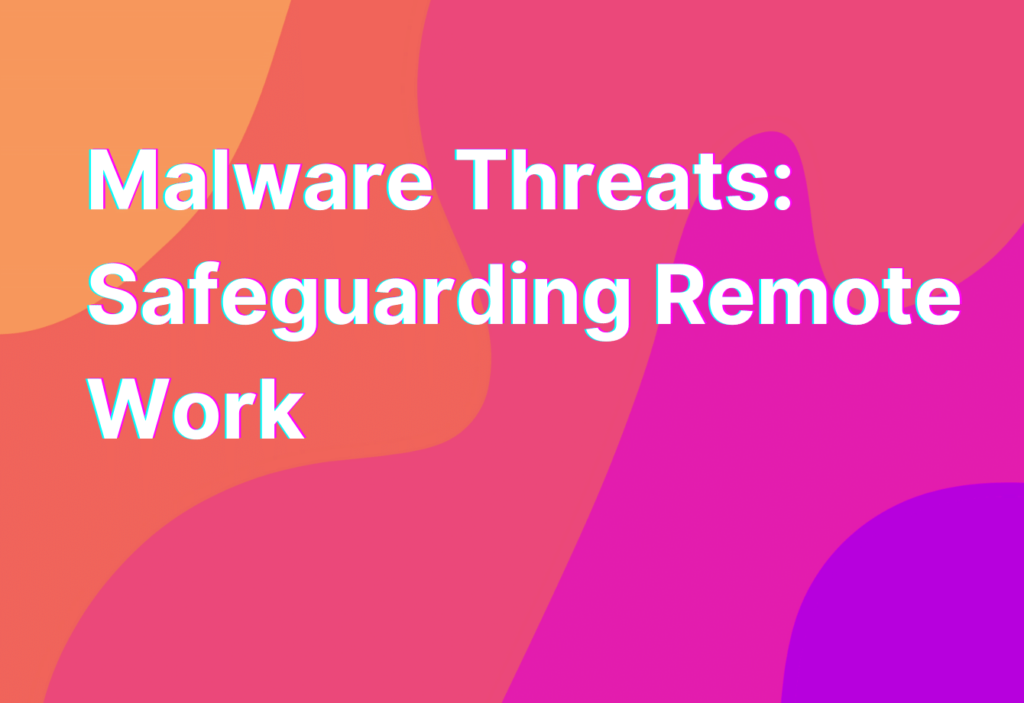Malware Threats: Safeguarding Remote Work
Hey there, remote work warriors! It’s Ashley, your friendly neighborhood remote work advocate, here to talk about a topic that’s not so friendly: malware. As remote workers, we rely heavily on our computers and the internet to get our jobs done. But with great power comes great responsibility, and that includes protecting ourselves from the dark side of the web.
What is Malware?
Before we dive into the nitty-gritty of safeguarding our remote work, let’s start with the basics. Malware, short for malicious software, is any software designed to harm or exploit your computer system. It can come in many forms, such as viruses, worms, ransomware, and spyware. These sneaky little buggers can wreak havoc on your files, steal your personal information, and even hold your data hostage.
Now that we know what we’re up against, let’s explore some practical tips to keep our remote work environments safe and sound.
1. Keep Your Software Up to Date
One of the easiest ways for malware to sneak into your system is through outdated software. Software developers are constantly releasing updates to patch security vulnerabilities and improve performance. So, make sure you’re regularly updating your operating system, antivirus software, and all other applications you use for work. Trust me, it’s worth the few minutes of inconvenience to avoid a major headache down the line.
2. Be Wary of Phishing Attempts
Phishing is like the art of deception in the digital world. Cybercriminals will try to trick you into revealing sensitive information, such as passwords or credit card numbers, by posing as a trustworthy entity. They might send you an email that looks like it’s from your bank or a popular online service, asking you to click on a link or provide personal information. Don’t take the bait! Always double-check the sender’s email address and be cautious of any suspicious requests.
3. Use Strong and Unique Passwords
I know, I know. Remembering a bunch of complex passwords can be a pain in the you-know-what. But using strong and unique passwords is one of the best ways to protect yourself from malware attacks. Avoid using common passwords like “password123” or “123456” (seriously, people still use those?). Instead, opt for a combination of uppercase and lowercase letters, numbers, and special characters. And please, don’t reuse the same password for multiple accounts. You’re just asking for trouble!
4. Backup Your Data Regularly
Imagine this: you’re working on an important project, and suddenly your computer crashes. Panic sets in as you realize you haven’t backed up your files in ages. Don’t let this nightmare become a reality! Regularly backing up your data is like having an insurance policy for your work. Whether you choose to use an external hard drive, cloud storage, or a combination of both, make sure you have a reliable backup system in place. That way, even if malware strikes, you won’t lose everything.
5. Educate Yourself and Stay Informed
Knowledge is power, my friends. The more you know about the latest malware threats and cybersecurity best practices, the better equipped you’ll be to protect yourself. Stay up to date with the latest news, trends, and statistics in the world of cybersecurity. Follow reputable sources, attend webinars, and participate in online forums to expand your knowledge. And hey, if you’re feeling extra ambitious, consider getting certified in cybersecurity. You’ll become a superhero in the fight against malware!
Wrapping Up
Well, folks, that’s a wrap on our malware safeguarding adventure. Remember, protecting yourself from malware is an ongoing process. Stay vigilant, follow these tips, and always be on the lookout for new threats. And if you want to dive deeper into the world of network security for remote work, be sure to check out this essential guide on network security. Stay safe out there, remote work warriors!


